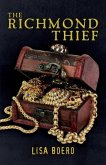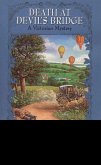Richmond or Scenes in the Life of a Bow Street Officer drawn up from his private memoranda purports to be the biography of a Bow Street Runner. But was Richmond a real person? And, if Richmond is fictitious, who wrote the book? All that is certain is that Richmond, published in 1827 in London, in three volumes, is the first-ever story of a professional detective in English. The first volume recounts Tom Richmond's early life. Always in search of adventure: he plays pranks on his neighbours; falls in love, and is sent away to boarding school; becomes a clerk in a counting-house in Liverpool; joins a troupe of actors, and ends up living with gypsies. He meets Jem Bucks, an actor, and Wilton, a poetic graduate of Oxford University and gets into scrapes with both of them. He becomes a Bow Street Runner at the end of the first volume. The second and third volumes are tales of Tom as a Bow Street Runner, and his marriage to Maria Cherry, a former courtesan. This paperback edition includes the three volumes as one book. The first volume is chapters 1 to 21; the second volume is chapters 22 to 39, and the third volume is chapters 40 to 56. So, the first question: was Tom Richmond a real person? Probably not. Only one person named Richmond ever worked with the Bow Street Runners during their 90-year existence from 1748 until 1839. He was a clerk called John Richmond who, in 1825, was dismissed because-to quote from the letter dismissing him-"he did not suffer a sense of duty or propriety to restrain the gratification of his lust, or his avarice". Curiously, the first edition, published in 1827, has the following at the beginning of the book: Mr. JOHN RICHMOND, late a clerk in the Police Office, Bow Street, is not, in any manner, directly or indirectly, connected with this work-London, March 16, 1827. Presumably the statement is intended to give credence to the book being a true-life story. But other factors point to it being fiction. The same characters appear often. For example, Tom encounters Blore, a notorious highwayman, in a tavern in Lancashire, and Blore helps Tom escape the clutches of two constables who have arrested Tom, believing him to be a deserter. Then Tom, on the road in Derbyshire, sees Blore hold up a phaeton which happens to be driven by a Mr and Mrs Figgens, Tom's old headmaster and his wife. Tom encounters Blore again, this time near London, when Tom is searching for a missing boy. Tom, not having seen Jem Bucks for some time, bumps into him in St James's Park in London. Jem is dressed "in a spruce blue coat and scarlet waistcoat". This is the uniform worn-not by the Runners but-by the associated Horse Patrol, said to be the first uniformed police force in England. The Runners always wore civilian clothes, like the CID today. Tom then says: "Through the influence of Wilton, I obtained a recommendation which was accepted; and I was admitted, sworn in, and commenced my duties among the law-breakers, as I shall record in the following chapters." Tom's eccentric and aristocratic friend, Wilton, might have had influence in high places, but even so, it is unlikely that Tom would have been appointed a Runner straightaway. Runners were usually appointed only after several years' service with a patrol. If Richmond is fiction, who wrote the book? Two names are often mentioned; Thomas Skinner Surr and Thomas Gaspey, without any particular evidence of authorship by either. So, the author is likely to remain anonymous. The grammar, punctuation and spelling in this edition are as in the original edition of 1827.








